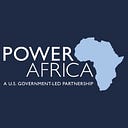Senegal’s First Utility-Scale Wind Farm Provides Big Lift for Local Communities
Investors looking to do well by doing good should take note of the Taiba N’Diaye Wind Farm in rural Senegal. This Power Africa-supported renewable energy project is helping Senegal meet its national electrification goals while directly improving the livelihoods of local residents and their communities.
Taiba N’Diaye is Senegal’s first utility-scale wind farm. Commissioned in December 2019, the initial phase of the project is already pumping 55 megawatts (MW) of renewable energy into the national grid, lighting up homes and businesses across the country. When fully completed by 2021, the wind farm will provide 158 MW of electricity to Senegal’s grid, or 15 percent of the country’s generation capacity. As an added bonus, the project developer, Lekela Power, plans to invest up to $20 million in community development efforts over the wind farm’s projected 20-year lifespan, which will be a big boost for those living near the project site.
“We look to have a lasting impact on the local people,” says Massaer Cisse, Lekela’s General Manager for Senegal. “This is a crucial aspect of our strategy.”
Leleka started making good on its commitment by creating 450 new jobs (largely in the construction sector) filled by Senegalese employees. In addition, Leleka built 20 miles of feeder roads connecting 36 local villages. Senegal is the third-largest mango exporter in West Africa and the Taiba N’Diaye Wind Farm is co-located with local community mango groves. The new feeder roads optimize farmers’ access to their groves, reducing crop losses and increasing area incomes.
Power Africa supported the Taiba N’Diaye transaction for three years with assistance to the developer, Lekela Power and Actis (UK) and a consortium led by Mainstream Renewable Power (Ireland), on financing, insurance, negotiation, and land rights issues. Through Power Africa, the Overseas Private Investment Corporation (OPIC)¹ provided financing and insurance to the project, and the U.S.-Africa Clean Energy Financing Facility provided grant funding for a series of engineering studies, environmental assessments, and technical assistance. The World Bank’s Multilateral Investment Guarantee Agency (MIGA), a Power Africa partner, provided political risk insurance.
Senegal has significant potential to develop additional wind power, and the Taiba N’Diaye wind farm presents an exciting model for stimulating economic growth in the local community while bringing low-cost, renewable energy to the grid. The Bureau Operationnel du Suivi, the government agency responsible for monitoring Senegal’s national development plan known as “Plan Senegal Emergent,” commissioned a Sustainable Asset Valuation (SAVi) assessment of the wind farm in 2019. The assessment concluded that, “the wind park is projected to be the most favourable option for the N’Diaye area, as it minimizes environmental impacts while maximizing socioeconomic benefits. Wind energy maximizes employment and increases local spending, while minimizing land use, water use, emissions and road disruptions.”
The SAVi assessment also compared the wind farm to a coal power plant and found that the farm is projected to generate at least 66 full-time jobs per year over the long term, as compared with 11 estimated jobs created by coal. Moreover, the assessment determined that the wind farm would avoid an estimated 2.1 million to 6 million tons of carbon dioxide emissions over 25 years.
Wind energy has long been recognized as an environmentally responsible energy option, and the Taiba N’Diaye Wind Farm illustrates that economic benefits extend far beyond solid financial returns for project developers. Wind power can also generate an economic tide that lifts all boats.
FOOTNOTES
- In 2019, OPIC and USAID’s Development Credit Authority (DCA) combined to create the new U.S. International Development Finance Corporation (DFC).
To learn more, visit www.usaid.gov/powerafrica.
